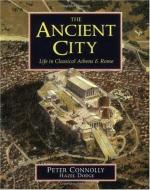|
This section contains 1,397 words (approx. 4 pages at 400 words per page) |

|
Part II: Rome, Pages 190 through 251 Summary and Analysis
The Colosseum
The huge arena constructed for the gladiatorial games is the Colosseum. Gladiatorial games originate from aristocratic funeral games. There is a morphing of the deaths of aristocrats with the sacrifice of human blood, which is thought to benefit the souls of the dead. The first gladiator presentation is in 264 BC. At the funeral of Marcus Pera three sets of gladiators fight it out to the death. In 65 BC, Julius Caesar orders 320 pairs of gladiators to battle during his father's funeral. Most gladiators are slaves or prisoners of war. Spartacus leads a gladiator revolt in 73 BC that lasts two years. The shows eventually lose any connection to funerals. When opponents are beasts or criminals, a death usually results. However, when gladiator faces gladiator, death is not always the outcome.
Before the Colosseum...
(read more from the Part II: Rome, Pages 190 through 251 Summary)
|
This section contains 1,397 words (approx. 4 pages at 400 words per page) |

|




